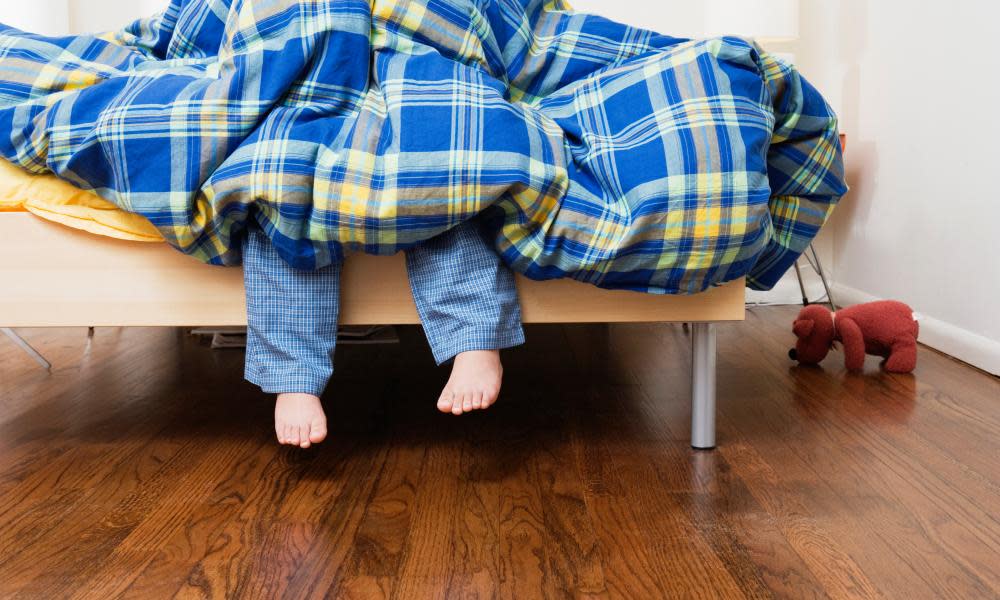‘Forever chemicals’ found in nearly 60% of children’s ‘waterproof’ or ‘stain-resistant’ textiles

Nearly 60% of children’s textiles labeled “waterproof”, “stain-resistant”, or “environmentally friendly” that were tested as part of a new study contained toxic PFAS substances known as “forever chemicals” due to their persistence in the environment.
Among products checked were clothing, pillow protectors, bedding and furniture.
“It’s definitely a concern because these toxic chemicals can make their way into children’s bodies,” said Laurel Schaider, one of the study’s authors.
PFAS, or per-and polyfluoroalkyl substances, are a class of more than 9,000 compounds typically used across dozens of industries to make products water-, stain- or heat-resistant. They’re in thousands of everyday consumer products such as stain guards, cookware, food packaging and waterproof clothing.
Related: Nearly 75% of water-resistant products contain toxic PFAS, study finds
The chemicals are linked to cancer, birth defects, liver disease, thyroid disease, decreased immunity, hormone disruption and a range of other serious health problems. They’re dubbed “forever chemicals” because they do not naturally break down, and they accumulate in humans.
The peer-reviewed study was conducted by the environmental health research group Silent Spring Institute and published in the Environmental Science and Technology journal. It aimed to provide a sense of the chemicals’ use in products that come with labeling suggesting it’s environmentally friendly or protective from stains and water. The study is not intended to provide a representative sample of children’s textiles.
It detected PFAS in 54 of 93 products, including 21 with labels such as “eco”, “green” or “non-toxic”. The chemicals were most widely used in products labeled “water-” or “stain-” resistant.
PFAS in clothing can get in the body via several routes. The chemicals are volatile, meaning they can break off from the products to which they’re applied, then move through the air and be breathed in. They can also attach to dust that’s breathed in or ingested, or they can be absorbed through the skin.
Silent Spring most frequently detected the chemicals in upholstered furniture, clothing, and pillow protectors, and the latter two generally contained the highest PFAS levels.
Nearly 20 products contained multiple kinds of PFAS, including PFOA, a highly toxic compound that regulators and industry claim has been phased out because of its danger, but which is still regularly detected in the US. Products that contained PFOA were made in China.
It’s difficult for consumers to avoid the chemicals because they aren’t listed on tags, but the study provides some helpful hints, Schaider noted. Products labeled “stain resistant” most commonly contained the chemicals as PFAS are often the main ingredient in stain guards like Scotchgard.
“That might mean making a lifestyle decision to live with stains,” Schaider said.
Products labeled “waterproof” also frequently contained the chemicals. Navigating “eco” and “green” labels is also difficult because there’s no legal definition for the terms, and they can be “meaningless” marketing, Schaider said.
Third party companies will certify products as environmentally safe, but there’s no uniform standard and some companies don’t consider PFAS in their certification. That’s partly because PFAS are a newer chemical than toxins like lead, but Schaider said certifiers “could do a better job”.
The best solution, she added, is a ban on PFAS outside of essential uses such as medical devices where there isn’t a substitute chemical.
“Where it is just a nice-to-have feature but we don’t really need it – all of these textile products fall into that category – it’s not worth it to introduce these forever chemicals into the home,” Schaider said.

